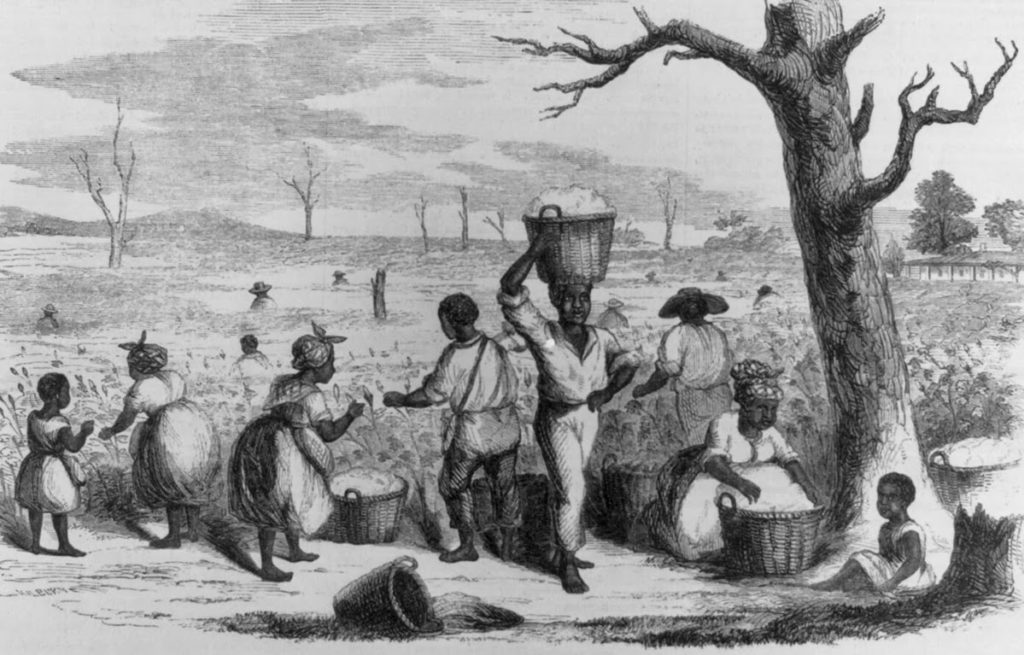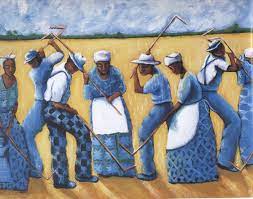
Origin:
Field Hollers and Work Songs originated during the era of slavery primarily during the 1600’s-1900’s. These songs were apart of an oral culture so they had no set style or uniformity and soon came to be recorded as slavery came to an end.
Work Songs:
During the 1600s-1700’s African American slaves had many ways of expressing their toil and pain through song and hollering which manifested into the concept of field hollers and work songs. Slaves included body, rhythm, and songs when completing daily tasks. Work songs were used when completing these tasks. They consisted of heavy accents on alternating beats which helped to synchronize the labor at hand. Work songs would have secret messages, bible stories and uplifting words. These work songs were created by slaves to have an encouraging method of communication and motivation. They were also utilized to coordinate the labor of a group of people which in return made for a more efficient work day.
A popular traditional work song is “Hold On” by Steven M. Allen which incorporates Afro- Cuban Son and ring shout. This song highlights the trials and tribulations of life. Work songs often communicate not only motivation, but the woes of life. It sheds light on the pain, labor an exhaustion of being a slave and completing day to day tasks. Overall, the primary purpose of work songs is to effectively communicate between workers, complete daily tasks and express emotion though daily life as a slave.
Field Hollers:
Field Hollers are another form of work songs that were sung by slaves. This form of communication consisted between cries and calls. Calls were particularly utilized to communicate to another slave on the plantation who was maybe off task or sleeping, that the slave master was nearby. Cries were used to express emotions such as pain, sorrow, loneliness or hunger. These songs were typically half sung and half yelled. Field hollers could also be religious as well. A way for the slaves to worship. Slaves often didn’t clearly differentiate between religious and non religious calls or cries. Slaves performed this style of music freely which included yodels, echolike, and falsetto.
Field Hollers are another form of work songs that were sung by slaves. This form of communication consisted between cries and calls. Calls were particularly utilized to communicate to another slave on the plantation who was maybe off task or sleeping, that the slave master was nearby. Cries were used to express emotions such as pain, sorrow, loneliness or hunger. These songs were typically half sung and half yelled. Field hollers could also be religious as well. A way for the slaves to worship. Slaves often didn’t clearly differentiate between religious and non religious calls or cries. Slaves performed this style of music freely which included yodels, echolike, and falsetto.
Conclusion:
African American Slaves used song and dance to communicate with each other. They often expressed a range of emotion and warnings to one another when completing daily tasks. Overall, this was an effective and efficient way to commune while utilizing music.



